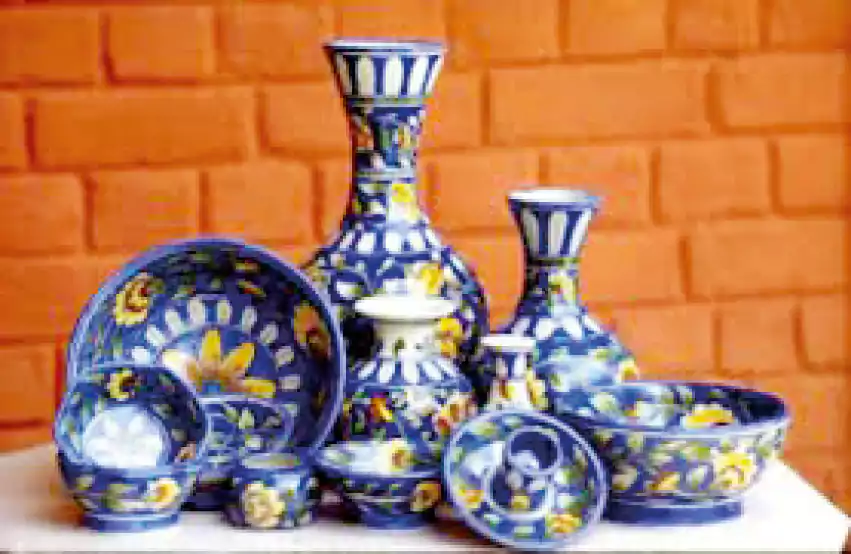Blue pottery, a unique and centuries-old art of south Punjab is on the verge of extinction whereas its revival can help improve the socio-economic uplift of the region. Some serious efforts for the revival of the cultural identity are also in progress, with a special focus on socio-economic uplift by the creation of employment opportunities for the youth.
The Kashigari (designing) work on pots is a traditional art of south Punjab. The blue pottery art originated from China and reached the sub-continent via Iran. Similarly, When Arabs en-tered Sindh Valley and Muhammad Bin Qasim conquered Multan in 712 A.D., he was also accompanied by some experts of “Kashi”. The experts settled here and they developed this art to earn their livelihood. Their favourite colour was blue. Multan had hundreds of shrines and other historic buildings and all these buildings contained three shades of the blue colour, stated officials from the Institute of Blue Pottery Development (IBPD) talking to media.
About the word Kashigari, the officials revealed that the word was related to “Koshan”, the famous city of Iran, and “Kashgar”, a popular city in China.
The art became very popular and was transferred from one generation to another.
Due to the least interest, taken by its custodians, the art of Kashi was on the verge of extinction. To revive the heritage art of the local region, the Institute of Blue Pottery Development (IBPD) Multan was striving hard to keep the art alive and hence to promote the cultural identity of the region. Some serious efforts for the revival of the cultural identity were also in progress with a special focus on socio-economic uplift by the creation of employment opportunities for the youth, maintained officials.
The Institute was working to provide training to students, offer common facility services to local blue pottery manufacturing units, conduct research, explore of cheapest pottery raw material, and develop suitable designs, which could not only depict the culture and history of the country but also meet modern requirements, they remarked.
“The Institute of Blue Pottery Development was preparing over 350 articles including a complete range of dinner-set, water-set, tea-set, soup-set, show-pieces, planters and many other things,” they added. About raw materials, they stated that IBPD used to purchase raw clay from Tharparkar, Swat, and Quetta. IBPD was playing important role in the revival of the blue pots adding, that over 1450 students had got training in the Institute. Although, the Institute was established in 1985 in the city classes for students were being organized since 2006.
“The students are also given scholarships in line with different programmes of Technical Education and Vocational Training Authority (TEVTA)”. A good number of students have availed training facility in different trades, including Kashigari, Mould making, Casting in Ceramics and Firing Techniques in Ceramics”, they maintained.
The Institute was also working on some other courses including Ceramics-I, Computer Graphics, Art and Designing Specialization in Kashigrai, Sculpture, Calligraphy, and Auto CAD/CCA. The IBPD can enroll 800 students annually.
When questioned about the future of Blue Pottery, the officials maintained that blue pots were very much liked by the masses, especially elite-class families and foreigners.
Similarly, blue pots were also the favourite choice of big hotels and restaurants.










